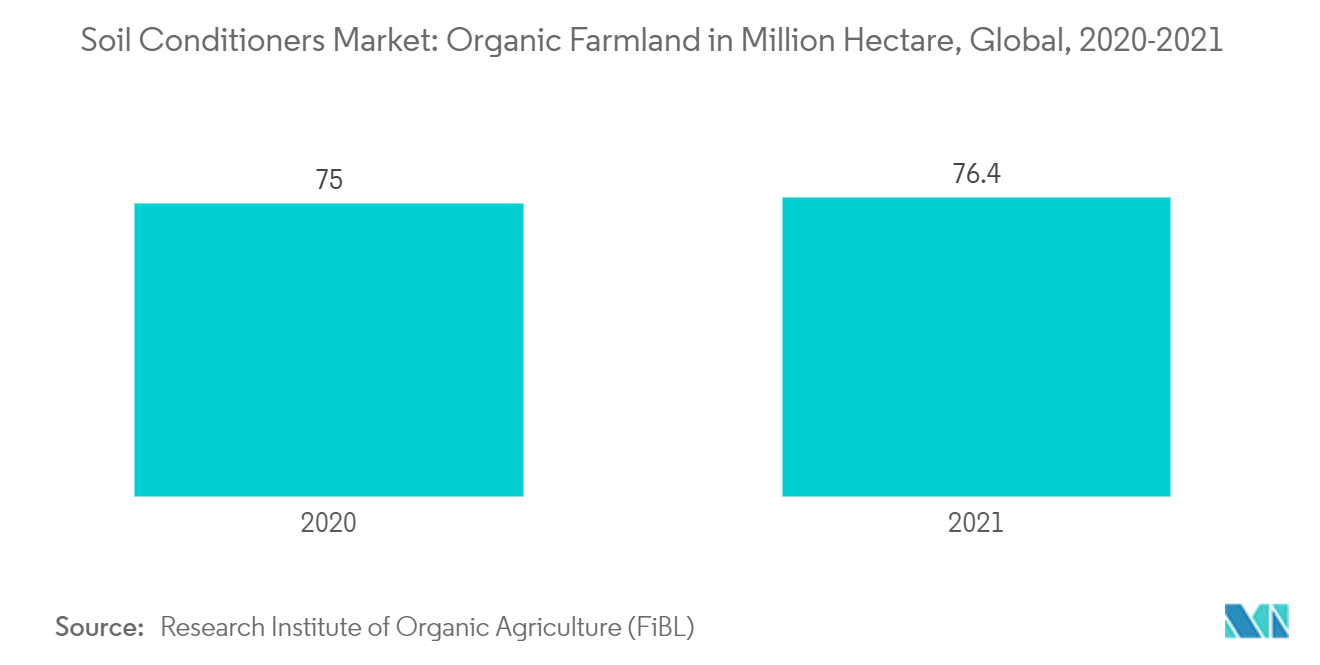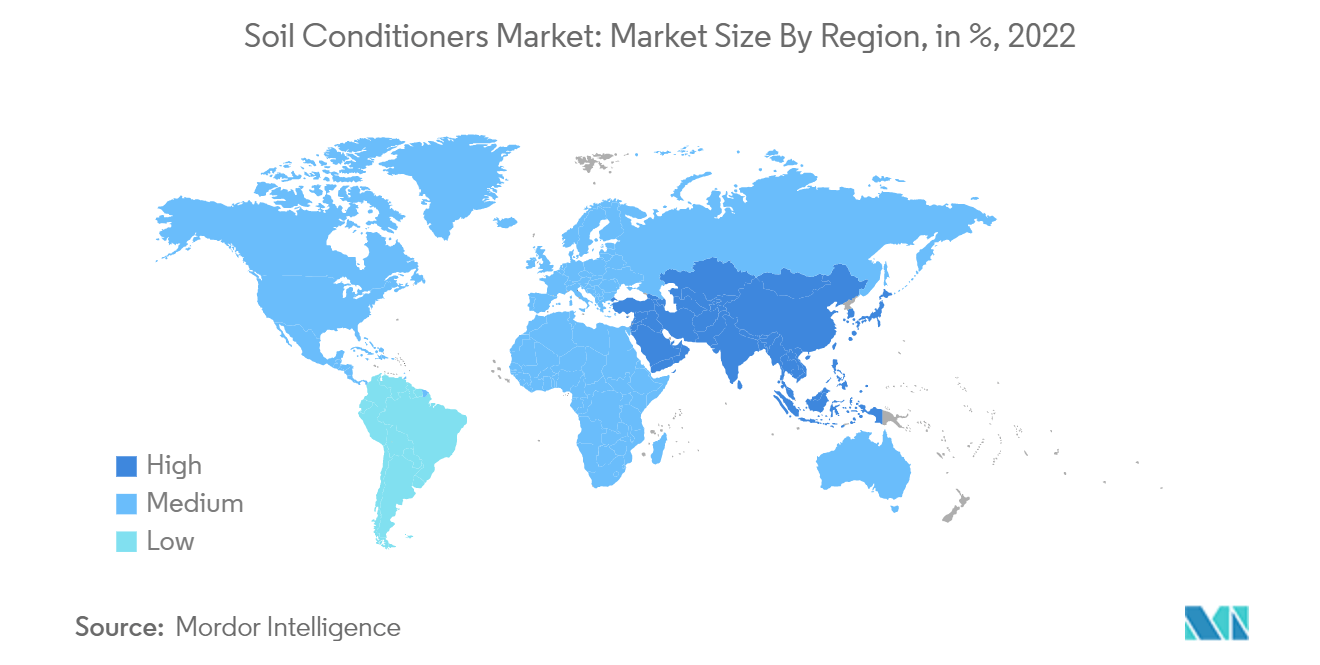Market Trends of Soil Conditioners Industry
This section covers the major market trends shaping the Soil Conditioners Market according to our research experts:
Degradation of Soil Condition and Soil Structure
- According to the Food and Agriculture Organization (FAO), the land equipped for irrigation is expected to expand by 32.0 million hectares, while harvested irrigated land is expected to expand by 17.0% by 2050. These scenarios are expected to be witnessed in developing countries, resulting in insufficient crop nutrient supply.
- According to a United Nations estimate, about 1.9 billion hectares of land have lost productivity, and 2 billion people are affected by land degradation globally. If land degradation continues at this pace, 95% of the Earth's land areas will be degraded by 2050. Thus, this leads to a lower yield of crops, along with a decline in the quality of the final product.
- The growing population worldwide is resulting in a decline in the proportion of arable land primarily used to produce food. This necessitates cultivation in poor soils. Soil degradation, directly and indirectly, affects agricultural productivity and water quality due to the increase in soil erosion, overgrazing, and other human-induced activities, such as deforestation, mining, industrial development, etc. Increasing soil conditioners and irrigation use efficiencies address the input side of the equation to the soil condition, which has been driving the market for soil conditioners in recent times.
- Farmers worldwide use soil conditioners, such as green manure, compost, etc., to recover soil fertility and address the soil structure so that it helps the plants take up nutrients and water efficiently. According to the Research Institute of Organic Agriculture (German: Forschungsinstitut für biologischen Landbau) (FiBL), the global organic farmland had increased by 76.4 million hectares in 2021 compared to the previous year. Companies in the market are introducing new products to cater to the farmers' demands for improving soil conditions and structure.

Asia Pacific Dominates the Market
- Asia-Pacific is considered to be one of the largest markets for agricultural products due to its large fertile lands and favorable climatic conditions. Despite these favorable conditions, the region is witnessing severe soil degradation due to frequent cropping to meet the food demand. In such a scenario, soil conditioners, such as compost, play an important role as a replacement or supplement for chemical fertilizers in replenishing nutrient-depleted soil.
- In countries like India, organic manure, including farmyard manure and green manure, is the oldest and most widely practiced means of nutrient replenishment for plants. As per a report by the Food and Agriculture Organization (FAO), due to the high animal population in India, farmyard manure is the most common organic manure, with cattle accounting for 90% of the total manure production in the country.
- A rise in soil erosion rates, land clearance, deforestation, etc., have induced farmers to rely on soil conditioners to improve yields and soil health to address the growing food demand of the ever-increasing population in the region. Especially for markets like China, with excessive chemical fertilizers and pesticides applied to intensive cultivation, the soil has degraded mainly in the past decades. Now growers demand effective solutions to their specific soil problems. Major producers are investing in R&D to innovate new product lines to solve the problems related to the soil to make the region sustainable without causing any loss in the production of agricultural crops. Thus, this is expected to drive the market for soil conditioners in the future.


